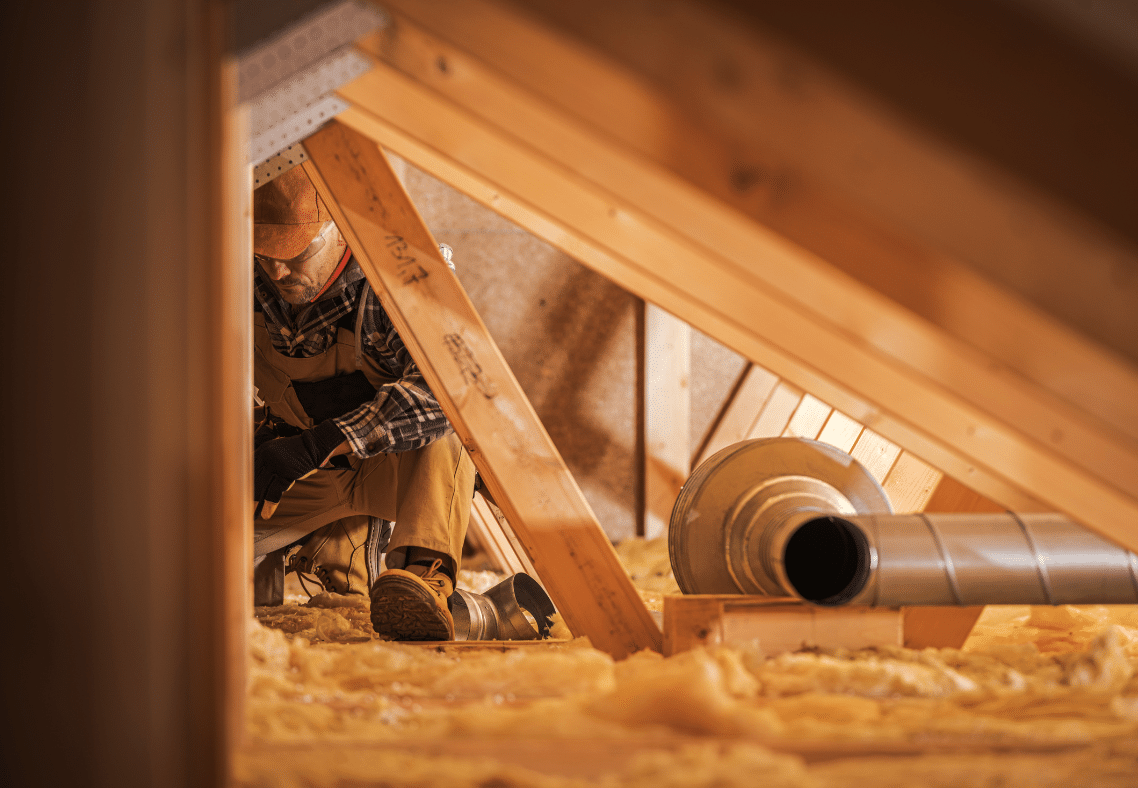Ridge Vent Vs Attic Fan: Which One is Better for The Baltimore Heat
Roof Right: Exterior Home Remodeling Specialists in Maryland Contact UsSchedule A Free EstimateSummers in Baltimore, Maryland can be brutal, with soaring temperatures, high humidity, and sweltering indoor conditions if your home isn’t properly ventilated. One of the most effective ways to protect your home’s comfort and energy efficiency during the Baltimore heat is through proper attic ventilation. When homeowners consider ventilation options, two solutions often come up: ridge vents and attic fans. Both systems serve the same primary purpose — removing hot air from your attic — but they do so in different ways and come with their own sets of pros and cons. So, when the Baltimore summer sun is beating down on your roof, which ventilation option should you choose? Let’s dive into a detailed comparison to help you make an informed decision.
Ridge Vent Vs Attic Fan: Which One is Better for The Baltimore Heat
Understanding Ridge Vents and Attic Fans
What Are Ridge Vents?
Ridge vents are installed along the peak (ridge) of your roof, allowing warm air to escape naturally from the highest point of the attic. This passive ventilation system relies on the natural rise of hot air and the introduction of cooler air through soffit vents at the base of the roof. Because they don’t require electricity, ridge vents are a low-maintenance and energy-efficient solution.
How They Work:
When properly paired with intake vents (like soffit vents), ridge vents create a natural convection current. Cooler air enters from below, and the hotter, lighter air exits through the ridge vent. This continuous air exchange helps keep attic temperatures closer to the outdoor ambient temperature, reducing the strain on your cooling system.
What Are Attic Fans?
Attic fans, sometimes called powered attic ventilators, use electricity to actively pull hot air out of the attic. These systems are often mounted on the roof or gable wall and are controlled by a thermostat. When the attic reaches a certain preset temperature — often around 100°F — the fan kicks on, expelling hot air rapidly.
How They Work:
Once activated, an attic fan forces hot air out of the attic, often pulling cooler air from soffit vents or from inside the home if soffit vents are inadequate. Some fans are also equipped with humidistats to help manage humidity levels, making them particularly valuable during humid Baltimore summers.
Pros and Cons of Ridge Vents
Advantages:
- Energy Efficient: Ridge vents are completely passive, meaning they don’t require electricity to operate. Once installed, they cost virtually nothing to run.
- Low Maintenance: With no moving parts, there’s little that can break or require maintenance over time.
- Visually Appealing: Ridge vents are sleek and discrete, blending into the roofline without noticeable hardware.
- Consistent Airflow: When installed correctly with balanced intake and exhaust, ridge vents provide a continuous, natural flow of air.
Disadvantages:
- Dependent on Proper Installation: If your home doesn’t have enough intake ventilation (like soffits), ridge vents won’t function properly.
- Weather Reliant: On very still, hot days with no wind movement, the effectiveness of ridge vents can be reduced compared to mechanical options.
- Limited Impact on High Humidity: Ridge vents are less effective at controlling extreme humidity compared to active ventilation.
Pros and Cons of Attic Fans
Advantages:
- Rapid Cooling: Attic fans can quickly drop attic temperatures by 10–30 degrees, making a significant difference in comfort and energy usage.
- Humidity Control: Many attic fans can also regulate humidity, helping to prevent mold and mildew buildup.
- Temperature-Based Activation: Modern fans with thermostats or humidistats operate automatically, giving homeowners peace of mind.
Disadvantages:
- Energy Costs: Since they run on electricity, attic fans will add a small amount to your energy bill — though the savings on air conditioning can offset this.
- Maintenance Needs: Moving parts like motors and blades will eventually require maintenance or replacement.
- Risk of Negative Pressure: Poorly installed attic fans can draw cooled indoor air from your living space, reducing your home’s energy efficiency.
Which Is Better for Baltimore Homes?
The answer depends on your home’s specific needs and existing roof design. In Baltimore, where the summers are hot, sticky, and often stagnant, each solution offers important benefits.
- For homes with proper soffit venting and good roof design: Ridge vents offer a “set it and forget it” solution that’s energy-efficient and virtually invisible.
- For homes needing aggressive temperature and humidity control: Attic fans provide a more active solution to battling oppressive heat and moisture buildup.
In some cases, combining both options can yield the best results. For example, a ridge vent system might handle moderate days perfectly, while an attic fan could kick in during extreme heatwaves or periods of high humidity. Ultimately, working with a professional is crucial to assess your attic’s current ventilation, insulation, and airflow dynamics. Improperly combining ridge vents and attic fans, for instance, can lead to counterproductive results — like drawing in moisture or conditioned indoor air.
Why Proper Attic Ventilation Matters in Baltimore
Choosing the right ventilation system for your attic isn’t just about comfort — it’s also about protecting your investment. Without proper ventilation:
- Roof shingles deteriorate faster, especially under intense UV radiation common during Baltimore summers.
- Energy bills skyrocket as your air conditioner struggles to cool a superheated home.
- Humidity causes wood rot, mold growth, and insulation damage, leading to costly repairs.
Investing in the right ventilation today ensures that your home stays cooler, your roof lasts longer, and your indoor air quality remains healthy all year round.
Contact Roof Right for Attic Ventilation Services in Baltimore, MD
At Roof Right, we understand the specific needs that Baltimore homeowners face when it comes to battling summer heat and humidity. Whether you’re considering the passive efficiency of a ridge vent system or the active power of attic fans, our experienced team is ready to help you make the best decision for your home. We offer professional consultations, tailored solutions, and expert installations — ensuring your attic ventilation system will perform optimally for years to come. With decades of experience serving the greater Baltimore area, Roof Right knows what it takes to protect your home from Maryland’s unpredictable weather. Don’t let the summer heat take a toll on your comfort or your energy bills. Contact Roof Right today to schedule your attic ventilation consultation and discover the best way to keep your Baltimore home cool, dry, and energy-efficient!
Areas We Serve
If you're looking for a roof contractor in Maryland, give Roof Right a call today at (410)-374-5923 to schedule an appointment!
Carroll County
Howard County
Clarksville, Columbia, Elkridge, Ellicott City, Fulton, Jessup, Laurel, Woodstock
Montgomery County
Baltimore County
Baldwin, Bradshaw, Carney, Cockeysville, Glen Arm, Hunt Valley, Jacksonville, Kingsville, Lutherville, Nottingham, Overlea, Owings Mills, Parkton, Parkville, Perry Hall, Phoenix, Pikesville, Reisterstown, Sparks, Timonium, Towson, White Marsh

